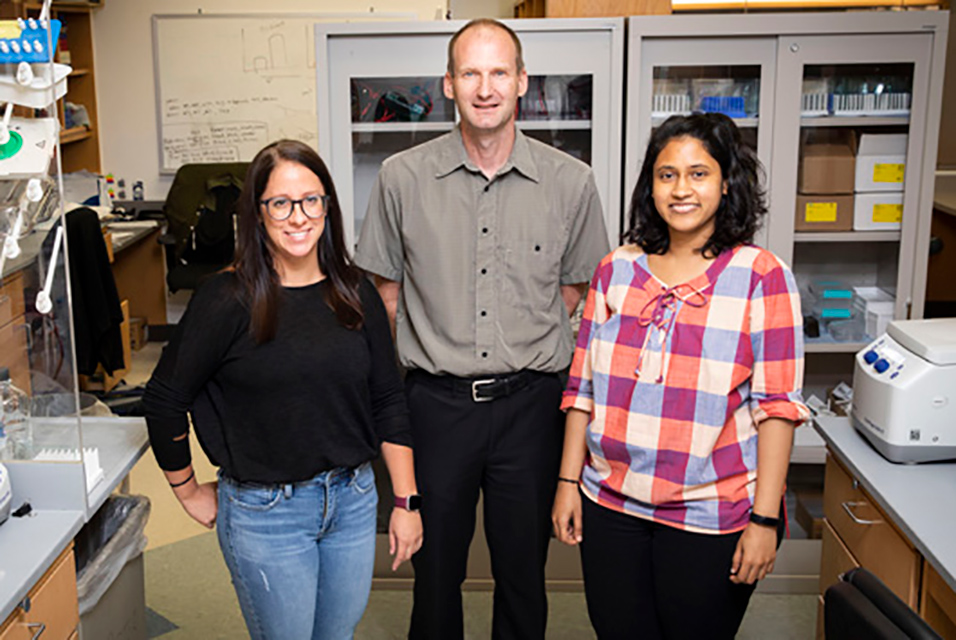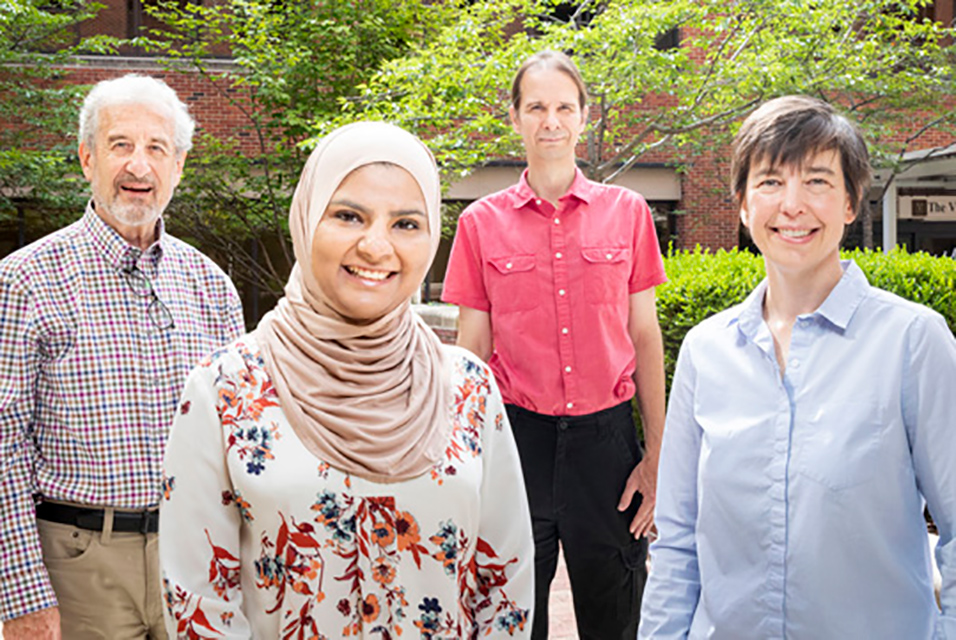NASHVILLE, TN.- One protein. One mechanism of action. Two biologically opposite effects.
“It’s conceptually unexpected and interesting for a protein to switch biological functions without actually changing what it’s doing,” said David Cortez, PhD, professor and chair of Biochemistry, of his team’s recent discoveries about the protein RADX.
Cortez, who holds the Richard N. Armstrong, PhD Chair for Innovation in Biochemistry, and his colleagues first identified RADX several years ago and linked it to a process cells use during DNA replication to respond to sites of damage. Now, in two papers published recently in Molecular Cell, the researchers have clarified what RADX does and how it does it.
RADX works at sites of DNA synthesis, called replication forks, where Cortez’s team previously found that it regulates a process called “fork reversal.” Fork reversal happens when the DNA replication machinery encounters a problem and backs up — like a train might if something was blocking the track.
“When there are DNA lesions or any trouble during replication, which happens during every cell division cycle, fork reversal is one way that the cell uses to respond to that damage,” Cortez said. But when there aren’t lesions, replication forks shouldn’t stop or reverse.
In studies led by postdoctoral fellow Madison Adolph, PhD, and graduate student Archana Krishnamoorthy, the researchers have now discovered that RADX has different effects on replication forks, depending on the conditions of the “track.” In unstressed cells (no lesions or trouble), RADX prevents fork reversal; in stressed cells, it promotes fork reversal.
“RADX makes sure the train stops and backs up — the forks reverse — only when they’re supposed to,” Cortez said.
The new discovery overturned parts of the models that the Cortez team had previously developed to describe RADX function. The earlier models were right about RADX preventing fork reversal, Cortez said, but it took a conceptual leap to understand that the same protein could both prevent and promote fork reversal, depending on the cellular conditions.
Cortez praised Adolph and Krishnamoorthy for continuously questioning the models that the lab had proposed.
“They weren’t afraid to keep testing the models and to overturn the dogma that our lab had created,” he said. “Our data was all right, but we had to revise our interpretation of it. That’s what science is all about.”
The researchers discovered the mechanistic details of how RADX works by binding to another protein called RAD51, which is required at carefully controlled levels to cause fork reversal. The complex process is fundamental to DNA replication and cell division.
“In every cell division cycle in every organism on the planet, DNA synthesis has to start and finish,” Cortez said. “If it doesn’t do it correctly, it causes mutations that can result in cancer, developmental disorders, and all kinds of problems.
“The cell has layer upon layer of regulation because DNA synthesis is so important. RADX is one of those layers. It’s fine tuning this whole interesting mechanism of fork reversal to make sure it happens only when it’s supposed to, so that DNA synthesis is complete and accurate.”
The new findings also add to the group’s previous discovery that RADX plays a role in the sensitivity of cells to cancer chemotherapies. RADX and BRCA2 (the protein encoded by a gene associated with risk for breast and ovarian cancer) compete for binding to the same site on RAD51, Cortez said. “Our in vitro data show that RADX influences responses to therapy, but we don’t know what happens in patients. There’s a lot still to be learned.”
Also participating in the studies were Taha Mohamed, Swati Balakrishnan, PhD, and Walter Chazin, PhD, at
Vanderbilt, and collaborators at Columbia University, the Cancer Research Center of Marseille, France, and Washington University in St. Louis.
The cover of the July 15 issue of Molecular Cell features an illustration by Krishnamoorthy depicting an artistic representation of remodeling a “portion” of the replication forks.
The research was supported by the National Institutes of Health (grants GM116616, CA237263, CA248526, GM118089, CA221858) and the Breast Cancer Research Foundation.










